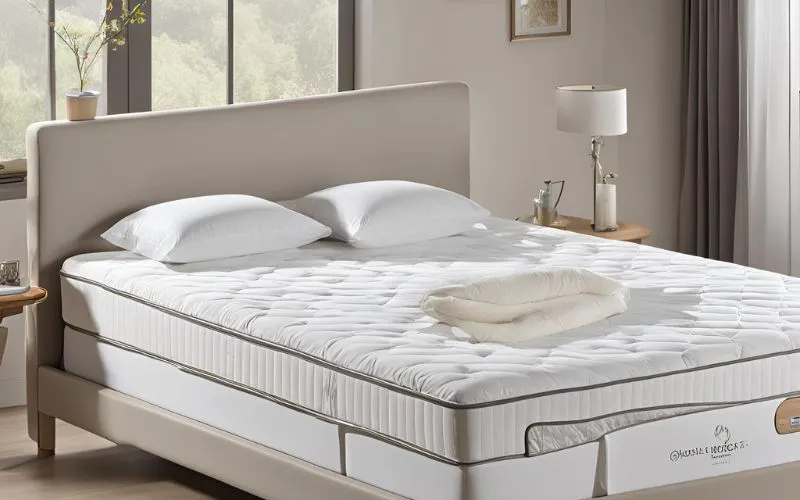Sleeping Positions for Pain Relief with Adjustable Beds

Introduction
Sleeping positions can significantly affect our quality of sleep and overall well-being. Many people suffer from chronic pain and discomfort, making it difficult to find a peaceful night’s rest. In this comprehensive guide, we’ll explore the relationship between pain and sleep, the impact of sleeping positions, and the benefits of adjustable beds for pain relief.
Understanding Pain and Sleep
The Connection Between Pain and Sleep
Understanding the connection between pain and sleep is crucial in addressing sleep-related discomfort. Chronic pain can disrupt sleep patterns, leading to sleep deprivation and exacerbating the perception of pain. Research has shown that poor sleep quality can contribute to increased pain sensitivity, making it essential to prioritize quality sleep for pain management and overall well-being.
Impact of Sleeping Positions on Pain
Our sleeping positions significantly impact our body posture and spinal alignment, which in turn can affect pain levels. Certain sleeping postures may exert pressure on specific body areas, leading to discomfort and disrupted sleep. By understanding how different sleeping positions influence pain, individuals can make informed choices to alleviate discomfort and improve the quality of their sleep.
Choosing the Right Sleeping Position
Back Pain Relief Sleeping Positions
For individuals experiencing back pain, specific sleeping positions can provide relief and promote proper spinal alignment. It is important to note that finding the right sleeping position tailored to back pain can contribute to a restful and rejuvenating sleep experience. Let’s explore some detailed sleeping positions and tips for back pain relief:
- Sleeping on the Back: When sleeping on the back, it’s essential to have adequate support under the knees to maintain the natural curve of the lower back. A small pillow or rolled towel placed under the knees can help alleviate pressure and promote proper spine alignment.
- Sleeping on the Side: For those who prefer sleeping on their side, placing a pillow between the knees can help maintain proper alignment and reduce pressure on the lower back. This position can alleviate strain on the hips and lower back, leading to a more comfortable sleep.
Additionally, it’s crucial to choose the right mattress and pillows for proper spinal support. A medium-firm mattress and supportive pillows can significantly aid in relieving back pain while sleeping. Furthermore, incorporating gentle stretching exercises and maintaining good posture during the day can complement the benefits of these sleeping positions.
Neck and Shoulder Pain Relief Sleeping Positions
Neck and shoulder pain can be a common issue that many people experience due to poor sleeping positions. It’s essential to adopt sleeping positions that not only provide comfort but also minimize strain and support the neck’s natural curve. Here are some detailed recommendations to alleviate neck and shoulder pain while sleeping:
- Back Sleeping with Supportive Pillow: Sleeping on the back with a supportive pillow can help maintain the natural curve of the neck and reduce tension. Consider using a pillow that provides adequate support to both the neck and shoulders.
- Side Sleeping with Contoured Pillow: If you prefer sleeping on your side, opt for a contoured pillow that offers support and alignment for the head, neck, and shoulders. This can minimize pressure points and contribute to a more restful sleep.
- Proper Pillow Height: Ensuring the pillow height is suitable for your body size and sleeping position can make a significant difference in preventing neck and shoulder pain. A pillow that’s too high or too low can lead to discomfort and strain.
- Maintain Neutral Spine Alignment: Whether sleeping on the back or side, it’s important to maintain a neutral spine alignment. This means the head, neck, and spine should be in a straight line without excessive bending or twisting.
- Consider Body Positioning Aids: Some individuals find relief from neck and shoulder pain by using special positioning aids, such as a rolled towel or cushion to support the neck or shoulder while sleeping.
Hip Pain Relief Sleeping Positions
Individuals experiencing hip pain can benefit from specific sleeping positions that alleviate pressure, reduce discomfort, and promote better sleep. By aligning the hips and minimizing strain, these sleeping positions can significantly improve the quality of sleep for individuals with hip pain. Here are some effective sleeping positions for hip pain relief:
- Side-Lying Position: Sleeping on the unaffected side with a pillow between the knees can help align the hips and reduce pressure on the affected hip. This position also provides stability and support for the body, leading to decreased discomfort and improved sleep quality.
- Back-Supported Position: Using a supportive mattress that conforms to the body’s natural curves can help maintain proper hip alignment, reduce strain, and alleviate hip pain during sleep. This position promotes spinal alignment and evenly distributes body weight, resulting in reduced pressure on the hips and enhanced comfort.
- Low-Stress Position: Adopting a sleeping position that minimizes stress on the hips, such as sleeping with a pillow under the knees, can help reduce discomfort and prevent exacerbation of hip pain. This position can improve blood circulation, relieve tension, and promote relaxation for better sleep.
Knee Pain Relief Sleeping Positions
Relieving knee pain during sleep involves selecting sleeping positions that reduce stress and promote comfort. Placing a pillow under the knees or sleeping on the back with knee support can help alleviate knee pain and minimize discomfort. Opting for suitable sleeping positions tailored to knee pain is beneficial for enhancing sleep quality and reducing strain.
- Back Sleeping with Knee Support: Sleeping on the back with a pillow or cushion placed under the knees can reduce pressure on the knees and promote proper spinal alignment, relieving knee pain.
- Side Sleeping with Knee Pillow: For those who prefer side sleeping, using a knee pillow between the knees helps maintain hip and spine alignment, reducing strain on the knees.
- Stretches and Exercises: Engaging in gentle knee stretches and strengthening exercises can help improve flexibility and reduce knee pain, making it easier to find a comfortable sleeping position.
Benefits of Adjustable Beds for Pain Relief
Customizable Support and Comfort
Adjustable beds offer customizable support and comfort, allowing individuals to personalize their sleeping positions according to their unique needs. By adjusting the bed’s elevation and position, users can alleviate pressure on specific areas and promote optimal spinal alignment. The ability to customize support and comfort makes adjustable beds a valuable resource for pain relief and improved sleep quality.
Pressure Point Relief and Circulation
Adjustable beds provide excellent support for pressure point relief and contribute to better circulation, ultimately leading to improved pain relief and quality of sleep. By adjusting the bed’s angle and elevation, individuals can effectively alleviate pressure on sensitive areas and enhance blood flow. This targeted support minimizes discomfort and promotes deep, restorative sleep, making adjustable beds a beneficial choice for addressing pain and enhancing overall well-being.
- Enhanced Pressure Point Relief: The adjustable nature of the bed allows for personalized positioning, which can effectively reduce pressure on specific pain points such as the shoulders, hips, and lower back.
- Improved Circulation: By adjusting the bed to optimize elevation, individuals can promote better blood flow throughout the body, aiding in the prevention of stiffness and promoting overall relaxation.
Conclusion
Choosing the right sleeping position is essential for alleviating pain and promoting restful sleep. The impact of sleeping positions on pain cannot be overstated, and the utilization of adjustable beds presents valuable opportunities for pain relief and improved sleep quality. By understanding the connection between pain and sleep and prioritizing suitable sleeping positions, individuals can proactively manage discomfort and enhance their overall well-being.




